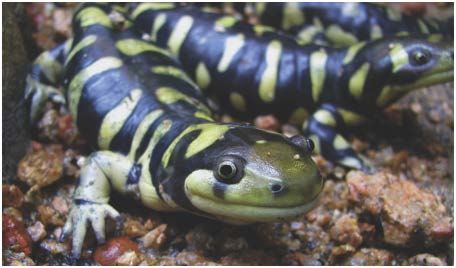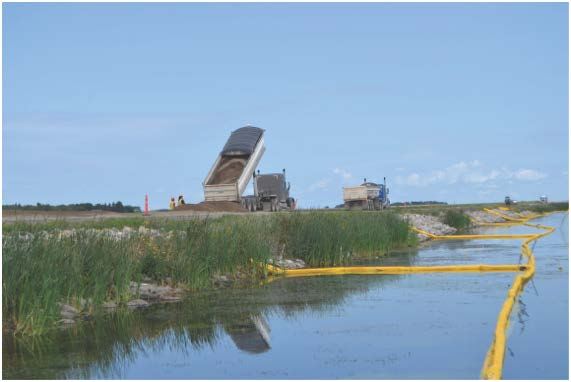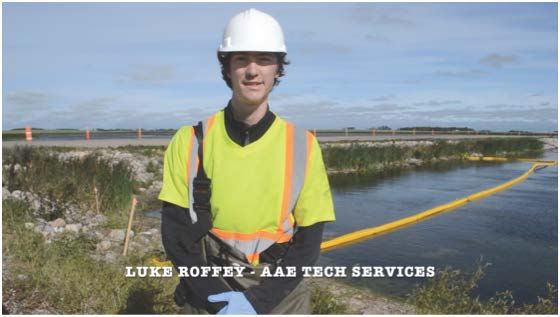How the little amphibian forced a big highway project in southwestern Manitoba to work around it, or face legal consequences.

Tiger salamanders in captivity. A Wikipedia photo.
Just as a multi-million dollar road improvement project was about to begin - between Shoal Lake and Hamiota in July - salamanders were found in the wetlands along the right-of-way. And not just any salamanders. These were the prairie population of tiger salamanders (Ambystoma tigrinum), considered a “species of concern” under the Federal Species at Risk Act.

As a result, so-called “turbidity curtains” (above) were strung along the area affected. They prevent sediment in what is considered the “hot zone” of construction, from spreading throughout the entire slough. That meant, salamanders trapped within them, had to be caught and moved.
Luke Roffey (below) works for a company hired by the main highway contractor to make sure provisions of the Act are upheld. He helped with the salvage operation.

He tells PinP it’s going well, with more than 11 hundred salamanders trapped and relocated. At this writing, the rescue operation was continuing.

Photo by Luke Roffey.
Minnow traps baited with “glow-sticks” proved an effective method of capture. But that took longer than expected, delaying the construction project somewhat, but, says Roffey, “not by much.”
He says he got the distinct impression that construction crews would not have “made way” for the salamanders if the federal legislation had not required them to do so. And, he believes, “Many of the 11 hundred would not have survived,” he concludes.
Salamanders are considered a key part of nature’s food web. Before they emerge from the water as larvae, they eat lots of harmful larvae like mosquitoes. And, after they move to their “on-land” (terrestrial) stage, they, themselves become important food for cranes, foxes, pelicans and many other animals.
The Committee on the Status of Endangered Wildlife in Canada, which advises government, says the pressure placed on the habitats of this prairie population by farming, oil development and other human activity, is “immense.”
By Larry Powell

I’m an eco-journalist living in Shoal Lake, Manitoba. I’m a member of the SWCC and the American Association for the Advancement of Science. I’m authorized to receive embargoed material through the Science Media Centre of Canada, the Royal Society and the World Health Organization. This allows me to “get a jump” on important stories by fleshing them out with fact-checks and interviews, in advance. This arms me with a “hot-off-the-press” story that’s ready to go, the moment the embargo is lifted.
I’m prepared to supply interested publications with important stories in the field of the Earth Sciences – stories often stranger than fiction! I publish www.PlanetInPeril.ca (PinP), “Where science gets respect.”
